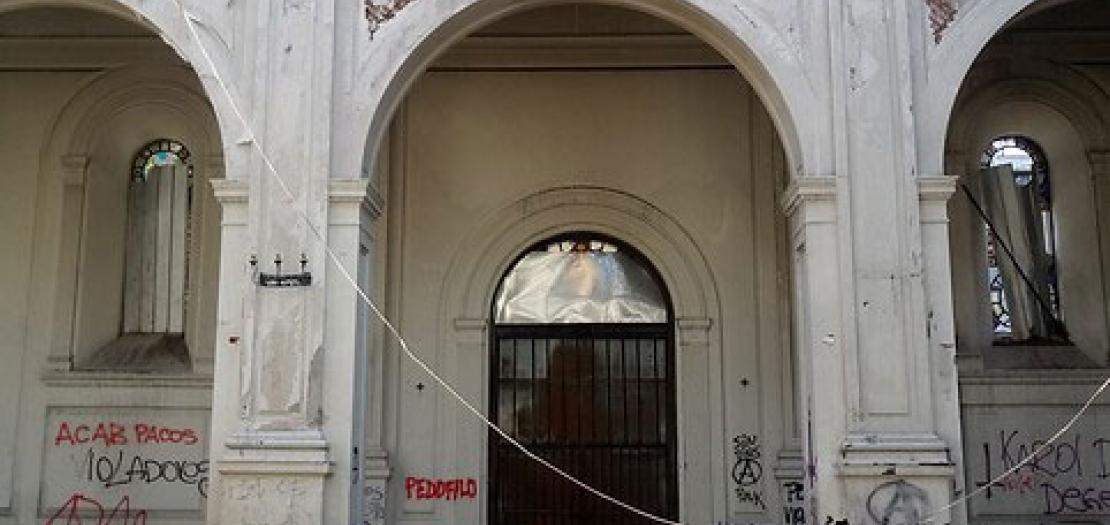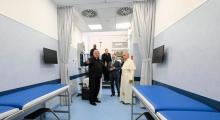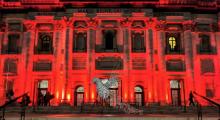Issued by the Catholic Center for Studies and Media - Jordan. Editor-in-chief Fr. Rif'at Bader - موقع أبونا abouna.org

The embers are still smouldering, and you can smell the smoke of burning in the centrally situated Church of the Assumption in the Chilean capital, Santiago. Looking up from the floor of the central nave, one can see the cloudy sky above, for the roof has been totally destroyed.
The central spire of the church, once a landmark characterizing this part of the city, is also destroyed. When the tower collapsed, the two bells fell from high up in the bell tower—one shattered; the other was salvaged from the ruins. The benches and altars were already burned and smashed earlier during protests over the previous year. Following the 2019 attacks, the doors and windows were boarded up to protect them, but it was not enough.
The week before, a meeting was held inside this historic church. The intention had been to announce the date of commencement of the restoration work inside the church on November 8, 2020, and to coordinate the plans for the initiation of the work. They already had the original plans of the church, with help from the municipality of Santiago and historical and structural studies.
The atmosphere was a tense one. The church had continued to suffer throughout 2020 from continuing threats and graffiti. “Owing to its situation, just a few metres from the Plaza Baquedano, the parish had been living through a state of constant insecurity, even during the coronavirus lockdown. Since 2019, the walls have been covered with graffiti, both inside and out, with slogans attacking the Church and priests and such phrases as ‘Let’s see it burn down,’” explains María de los Ángeles Covarrubias, the president of the Chilean national section of Aid to the Church in Need, which helps Christians around the world who are persecuted or threatened in their faith or otherwise in grave need.
“To see the deliberate burning down of a church destroys your soul,” Mrs. Covarrubias continues. “It reveals the degree of brokenness of our society, in which small groups of people come to regard themselves as the only ones in the right and thereby entitled to destroy and even celebrate the destruction of buildings that represent the faith of a community. The irrationality and hatred that we are witnessing is an attack on a fundamental human right to religious liberty. Such violence should have no place in a society that claims to be democratic.”
Father Pedro Narbona, the parish priest, tells how he still shudders at the “euphoric celebrations when the church spire fell last Sunday. It reminded me of November 2019, when they decapitated the statue of Our Lady, which had stood outside the west front of the church. It hurts me that the community has now been left with no place to gather, now that a small hall that we were using has been completely vandalized. Here in this church is contained a living history that goes well beyond its own walls. It is all that relationship with God of those many people who came here to pray, to baptize their children, to marry, and to say farewell to their departed loved ones.”
Magdalena Lira, the national director of ACN Chile, reveals that “ever since the first attack and vandalism on November 8, 2019, we have been getting together with the parish priest Father Pedro Narbona, to raise funds for the restoration of the church. We were just at the stage of refining the project, together with a team of professionals. On November 8, the anniversary of the first attack on the church, Father Pedro was going to announce the start of the restoration work. Now our plans have been torn to shreds.”
Reconstruction: Work of Reparation and of Social Peace
For Pablo Allard, the chief architect of the local administration, the Church of the Assumption holds a personal significance. His own mother, Angélica Serrano, had donated to the church a painting she herself had painted. “I believe that, beyond our creed or denomination, churches are works that speak of the power of the mystery of faith and the search of humanity for a transcendence that goes beyond the material,” he says. “They are essentially places of community, which not only provide service by bringing the liturgy of the word to believers, but are also centres of aid and support for the most vulnerable, and at the same time part of our tangible and intangible patrimony. Even though our resources are limited, I believe that the reconstruction of these churches should be undertaken as a work of reparation and of commitment to social peace.” Such is the view of this architect and urban planner.







